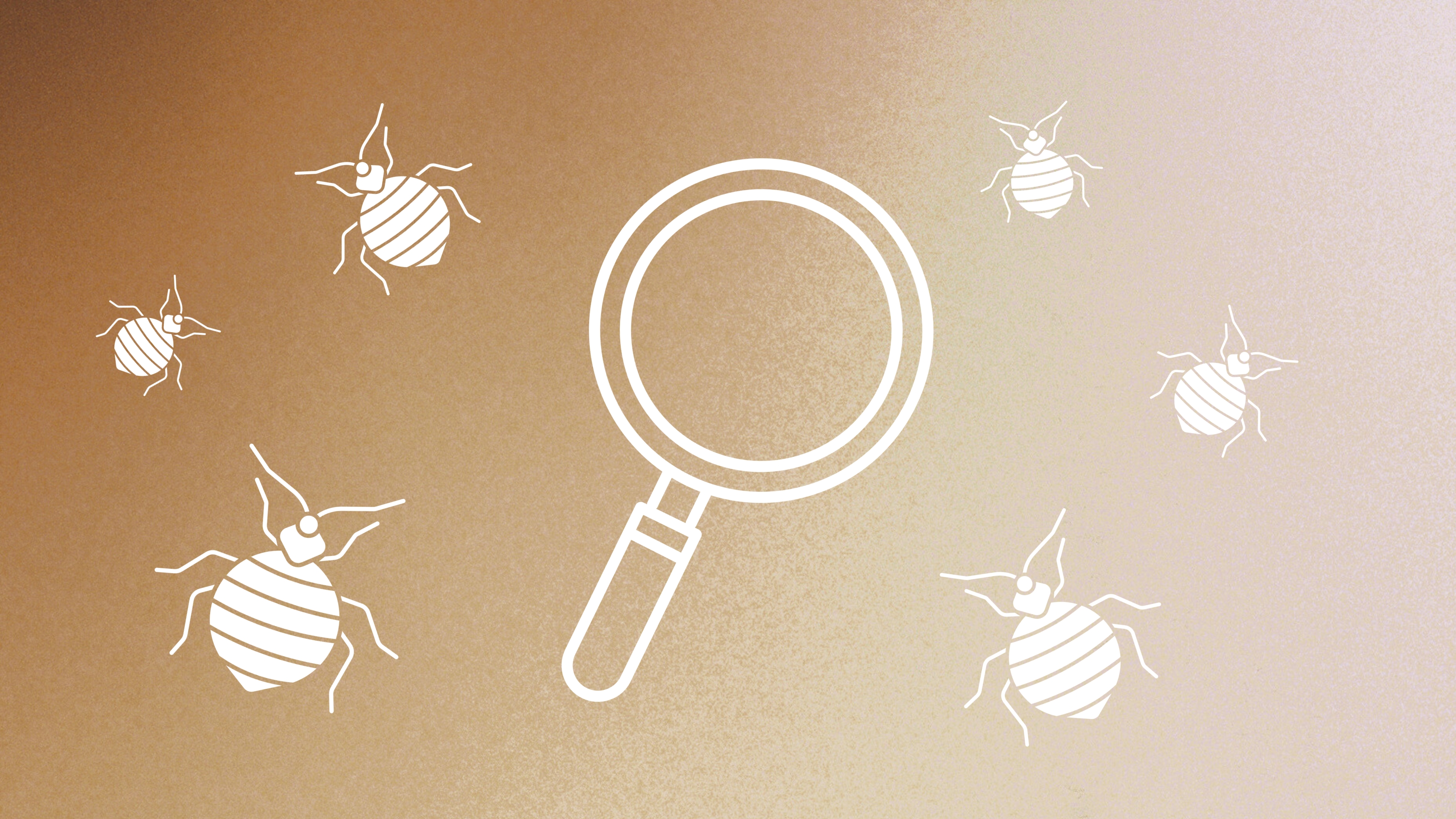

Beth Mahoney
You'll need to know how to get rid of bed bugs ASAP, if you've found yourself in the middle of an infestation. It's time to say ciao to those little critters.
Not only is the prospect of these pests crawling all over you as you sleep pretty nasty, but the bites that you may get are very unpleasant, too. But not to panic, we're here to help!
If you're not overly sure whether you have this particular pest, consult our how to identify bugs in your home article to double, and triple-check. Then get started on getting rid of bed bugs, before your problem gets too out of hand, they move quick!
How to get rid of bed bugs
Shawn Gleason Ph.D., seasoned entomologist, certified pesticide applicator, and creator of Bugs Encyclopedia, says: “For bed bug infestations, firstly, promptly consult a professional exterminator,"
In the interim, he advises that you implement these steps:
- Isolation: Seal off the infested room. Use bedbug-proof covers [like this one from Amazon] on mattresses and pillows.
- Heat treatment: Bed bugs can't survive temperatures above 122°F. Wash and dry linens on the highest setting. And, use a handheld steam cleaner [like this highly-rated pick on Amazon] on furniture and cracks.
- Diatomaceous earth: This natural powder [available on Amazon] damages the bugs' outer layer. Sprinkle in bed bug hideouts and vacuum after three days.
"Remember, early intervention and consistent measures ensure successful eradication," he concludes

Shawn Gleason is a seasoned Entomologist with a Ph.D. from the University of Florida and is also the founder of Bugs Encyclopedia. With over 10 years of experience in Integrated Pest Management, Shawn a certified Pesticide Applicator and a recognized authority in entomology.
Signs of bed bugs
Before you can start tackling bed bugs, you'll need to know, once and for all, whether you have an infestation. As it's highly unlikely that you'll ever see your bed bugs, here are some sure-fire signs that you could be dealing with the little critters:
Get small space home decor ideas, celeb inspiration, DIY tips and more, straight to your inbox!
- If you wake up in the morning with super itchy skin that you didn't have when you went to sleep, this could be a sign that you have bed bugs. You may also notice a rash made up of small, red spots across your body.
- You may spot small bloodstains on your bedding, along with rust-colored spots of bed bug excrement. If you have dark bedding, this may be more difficult to spot.
- If you manage to find where the bed bugs are hiding, you may also spot small eggs or evidence of them shedding their skins.
- There may be a musty smell hanging around your space, this is something that bed bugs release.
Where bed bugs hide
How do bed bugs get into your home? It might be that they have come in with luggage (have you stayed somewhere infested?), clothing, or already-used beds or furniture. They like to hide in groups and if they've infested your mattress you can be pretty sure they're living in the bed frame and headboard, too.
How to clean your bed to get rid of bed bugs
The best solution for getting rid of bed bugs might be to replace your mattress entirely. Shelling out on the best mattress is a big investment, though, so your first port of call might have to be to give your bed a thorough scrub.
Here's how to do this effectively:
- Take a stiff brush (like this one from Amazon) to the mattress, then use a good handheld vacuum to clean it thoroughly and regularly. Empty the vac immediately into an outdoor trash can.
- Do the same for the bed frame and all around the room where you've found the bed bugs.
- Wash bedsheets, clothes, curtains, and any other soft furnishings on a hot wash and, if you have a dryer, in a hot setting.
- Anything else around the bed needs to be hot-washed, too.
- Alternatively, place your sheets and bedding in the freezer for three to four days — this will kill the bed bugs.
- Keep on top of cleaning — this means regularly cleaning and vacuuming your space. And if you have a carpet, you might think about giving that a deep clean with a good upholstery cleaner or solution while you're at it.
- Get a good mattress protector. This acts as a barrier between the mattress and your bed linen. Remove it every time you wash your bedding and hot wash it too. Take advantage of the stripped bed to brush and vacuum it (as above).
- Look for places bed bugs can hide (bear in mind they're the depth of a credit card) and fill those gaps — even peeled wallpaper is a potential home for them.
- Keep the room where you discovered the bed bugs impeccably clean and clutter-free — bed bugs can survive for months without feasting.
Best products for getting rid of bed bugs
1. Tackle them with bed bug spray
One of the first steps in eliminating bed bugs is to try and kill them in situ before they get spread around the house. You will need to wash all bed linen or soft furnishings that they have been on but before doing so, you will want to get rid of them where they live. A spray is also good for items you can't wash like some furniture and mattresses.
If you have only spotted a few bed bugs, you can try less toxic methods like a distilled vinegar spray (like Aunt Fannie's one on Amazon). It will kill those it comes into contact with and can be sprayed quite liberally as long as you can allow it to dry, but note it will not get rid of the eggs.
It also won't work on a proper infestation — for this, you will need a proper bed bug spray, like the EcoRaider Bed Bug Spray available on Amazon.
Warning: Make sure to use bed bug sprays in a well-ventilated area and keep away from children and pets.
EcoRaider Bed Bug Killer Spray, 500ml | $19.45 on Amazon
With over 10,000 five-star reviews, this bed bug spray (that boasts a 100% kill efficiency) is non-toxic, USDA BIO-Certified, and plant extract-based. It can be used on bedding, mattresses and furniture so is perfect for items you can't put in a washing machine.
2. Kill them with steam
A safe, clean, and toxin-free way to kill bed bugs is with steam. Use a portable steam cleaner (like the highly-rated Hilife Steamer available on Amazon) to kill them (it should also make the eggs unviable), then once dry, vacuum the remnants away.
You could use an iron, but the steam is hard to direct and will take lots of refills. You also risk burning items that should not be ironed.
3. Wash them away then tumble dry to be sure
Even if you kill all the bed bugs where you found them, you will still need to wash all bedding and clothing (using an antibacterial laundry detergent like this one from Amazon is recommended) that may have come into contact with them.
We recommend putting everything on the hottest wash the fabric can take (although the water itself will do the main job by drowning them), then follow up with a tumble dry to be extra certain they do not survive.
If you're still not convinced of their demise, here's how to clean your machine effectively.
4. Vacuum the infested space thoroughly
Once the bed bugs are killed you need to be sure you have got rid of their eggs too. Use the firm brush attachment on your vacuum cleaner to clean away dead bugs and eggs, making sure you get into every corner or furnishings and the trim of your mattress.
DIY bed bug repellent
It is believed a number of essential oils will get rid of bed bugs and some can also be applied to the skin to discourage them from taking a bite. Peppermint oil (like this bottle from Plant Therapy on Amazon) is often heralded as the one they like the least.
You can apply small drops around your bed, but some people have a reaction to it on their skin so take care and consider other oils with a citrus base (ie: pink grapefruit essential oil, diluted with carrier oil for example). This Tea tree oil found on Amazon is a great natural insect repellent (also great for headlice in back-to-school season) and lavender oil (from HIQILI store at Amazon) is a repellent that comes with calming benefits for you.
Here's a handy how-to on how to make a bug spray:
- Take your essential oils of choice (in this instance, lavender, tea tree and/or peppermint)
- Fill a glass spray bottle (available on Amazon) with water and add the essential oils to your liking (about 20 drops of lavender and/or peppermint and 10 drops of tea tree should do the trick)
- Spray until your heart's content — over your bed and surrounding area.
- If you're headed off on vacation, take the spray with you and when you get to the hotel, spray your bed and around your suitcase to try to repel the little pests from hitching a ride home with you. Note liquid restrictions may apply so make sure you respect baggage laws.
When to call an exterminator
If all else has failed and you're still plagued by these nasty little bugs, we'd recommend getting in touch with your landlord or exterminator unit who can offer professional advice. Often you won't be able to rid yourself of bed bugs entirely, with shop-bought cleaning supplies.
FAQs
What do bed bugs avoid?
Bed bugs particularly despise smooth, plastic surfaces, making the material a safe space for those avoiding the insects. Per NYC.gov, they're likely to avoid rigid surfaces because their climbing capabilities aren't strong.
What causes bed bugs?
The main cause of bed bugs is contamination from a bed bug infested mattress or other form of upholstery. There's a common misconception that bed bugs are only attracted to dirty areas but that isn't actually the case; they're attracted to body warmth, carbon dioxide and blood.
Emily first (temporarily) joined the Real Homes team while interning on her summer break from university. After graduating, she worked on several publications before joining Real Homes as Staff Writer full time in mid-2018. She left the brand in 2020 to pursue another career, but still loves a second-hand bargain and sourcing unique finds to make her rented flat reflect her personality.
- Beth MahoneyFreelance journalist

